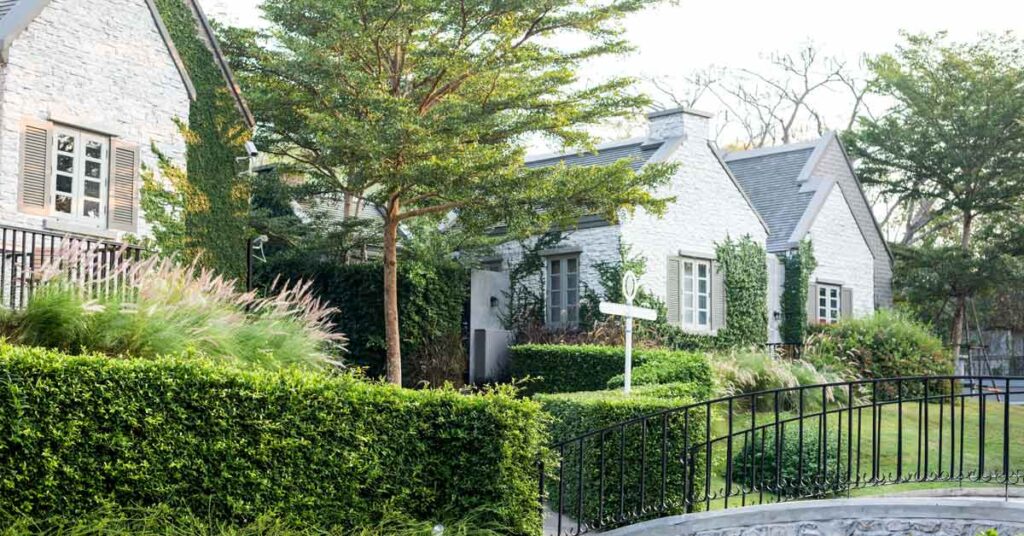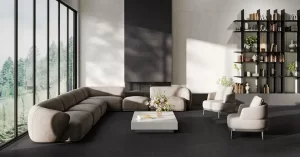A home garden is an oasis in urban life, a refuge from the bustling city, and a paradise for gardening enthusiasts to realize their plant dreams. In the fast-paced modern world, creating an ideal home garden not only enhances the quality of life but also represents a harmonious coexistence with nature. This article will explore how to create the perfect home garden and the joy and satisfaction gardening brings.
Planning and Design
1. Choosing a Garden Style
Before creating a home garden, it’s essential to decide on the garden style. Options include natural, modern, or Japanese styles, depending on the preferences and lifestyle of the family members. For instance, those who enjoy simplicity might opt for a modern design, while those who prefer a tranquil and refined atmosphere might draw inspiration from Japanese garden layouts and elements.
2. Functional Area Division
Based on the family’s needs and interests, divide the garden into different functional zones such as relaxation areas, barbecue zones, and planting areas. Proper zoning can enhance the garden’s utility, making it more practical and comfortable.
JOIN US TO STAY UPDATED ON YOUR FAVORITE MESSENGER APP!
3. Plant Selection and Layout
Plants are the soul of a home garden, so choosing species that suit the local climate and soil conditions is crucial. Mix flowers, shrubs, and trees to create a diverse landscape. When laying out the garden, consider the growth habits and color characteristics of the plants to achieve a layered, colorful visual effect.

Construction and Maintenance
1. Terrain Handling and Hardscape Installation
During construction, it is necessary to handle the garden terrain appropriately, such as leveling the ground, trimming the lawn, and setting up stone steps. Additionally, hardscape elements like paving stones, bricks, and wooden boards should be installed for walking and activity purposes.
2. Planting and Maintenance
Planting is a crucial part of garden creation. Choose healthy seedlings and seeds, and follow planting requirements for soil preparation, fertilization, and watering. During plant growth, timely pruning, weeding products such as those available at JennyChem, and pest control are needed to maintain the garden’s cleanliness and beauty.
3. Installing Auxiliary Facilities
In addition to plants, auxiliary facilities such as pavilions, plant stands, and fountains can be added to enhance the garden’s functionality and aesthetics. Consider adding lighting and sound systems to create an enjoyable atmosphere for nighttime relaxation and entertainment.
Hoisting and Safety
1. Design and Execution
When creating a home garden, design is crucial, but how to bring that design to life is equally important, especially when dealing with large-scale yards or complex landscapes. In some cases, traditional manual methods are no longer sufficient for moving and installing large stones, sculptures, or other heavy materials. This is where the use of professional equipment, such as automotive cranes, becomes essential.
2. Using Automotive Cranes Safely
Automotive cranes can easily handle these heavy materials, ensuring the smooth progress of construction. However, when using such machinery, it is vital to understand and follow the guidelines outlined in Crane Safety You Should Know. This not only ensures the safety of the construction personnel but also helps avoid potential risks during the construction process, allowing your garden project to be successfully completed.
Proper Plant Matching
1. Importance of Plant Selection
Plants are the core elements of a home garden. A well-considered selection not only enhances the garden’s aesthetics but also creates a healthy, sustainable ecosystem. When choosing plants, one should first consider their growth habits, such as height, form, flowering period, and growth rate, to ensure that different plants can coexist harmoniously without overshadowing each other or competing for resources.
2. Light Conditions
Light conditions are crucial for plant growth, so plants should be chosen based on the sunlight conditions of the yard. For example, sun-loving plants like roses and lavender are suitable for sunny areas, while shade-tolerant plants like ferns and ivy are ideal for cooler, shaded spots.
3. Water Requirements
Water requirements are another essential factor to consider when selecting plants. To reduce the frequency of watering and improve water efficiency, it’s recommended to group drought-tolerant plants separately from those with higher water needs. This approach not only satisfies the water needs of different plants but also helps prevent root rot caused by overwatering.
4. Aesthetic Considerations
When arranging plants, one should pay attention to the balance of colors, textures, and seasonal changes. For example, combining flowers and leaves of different colors can create visual layers and richness. Selecting evergreen plants, such as evergreen shrubs or conifers, ensures that the garden remains vibrant and lively even in winter. Meanwhile, deciduous and flowering plants can provide rich colors and seasonal variations in spring, summer, and autumn, offering different visual delights throughout the year.
5. Creating a Harmonious Ecosystem
In garden design, the rational selection of plants not only enhances aesthetic appeal but also creates a dynamic and harmonious ecosystem for the entire garden.
Joy and Satisfaction from Gardening
- Connecting with Nature: A home garden is the best place to connect with nature, experience the changing seasons and plant growth, and enjoy the fresh air and beautiful scenery.
- Relaxing and Rejuvenating: Gardening is a way to relax and de-stress, with activities like planting, pruning, and watering helps to calm nerves, alleviate stress and anxiety, and improve quality of life.
- Creating Cherished Memories: A home garden is a shared space for family members, where gatherings, barbecues, and picnics can be held, creating wonderful memories and strengthening family bonds.
- Enhancing Emotional Connection: Gardening activities can strengthen emotional bonds, as family members work together to plant, maintain, and arrange the garden, enhancing their connection and understanding.
Conclusion
Creating an ideal home garden is not only a lifestyle choice but also a form of respect and love for nature. Through planning and design, construction and maintenance, and the joy and satisfaction gardening brings, we can find pleasure and fulfillment in our home gardens and share the gifts of nature with our families. Let’s get started on creating our perfect home garden and enjoy a beautiful life!
ⓘ As part of our ongoing support for startups and SMEs, LAFFAZ Media publishes feature and resource articles that may include references and links to external websites. These inclusions are selected at our editorial discretion to provide valuable information to our readers. LAFFAZ Media does not control, endorse, or assume responsibility for the content or practices of external websites. For more details, please refer to our Terms and Conditions.





